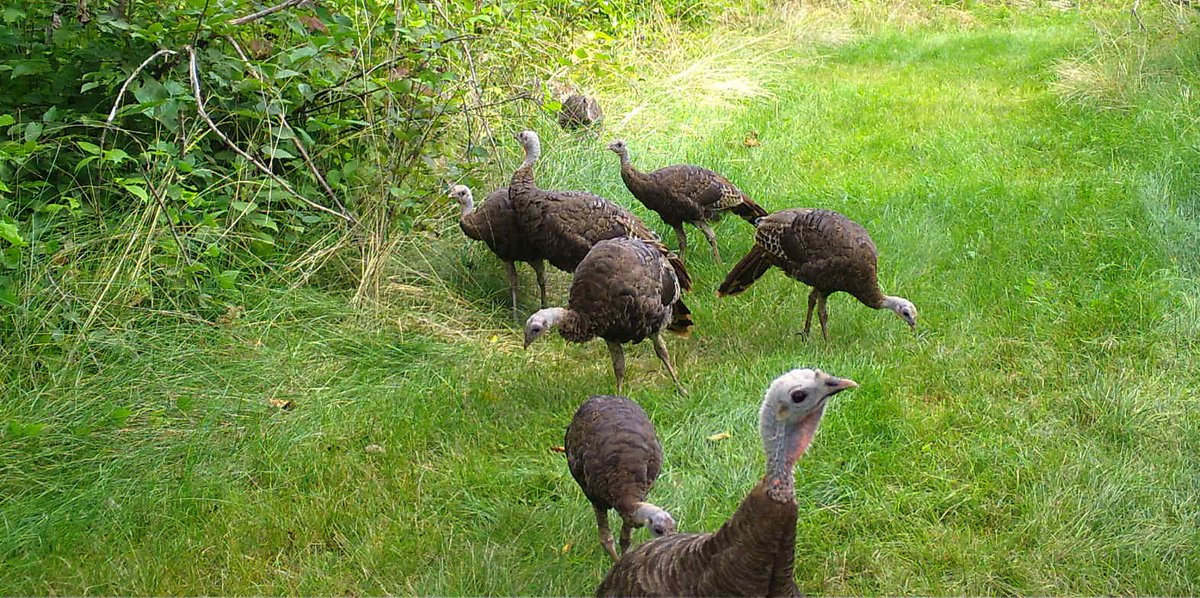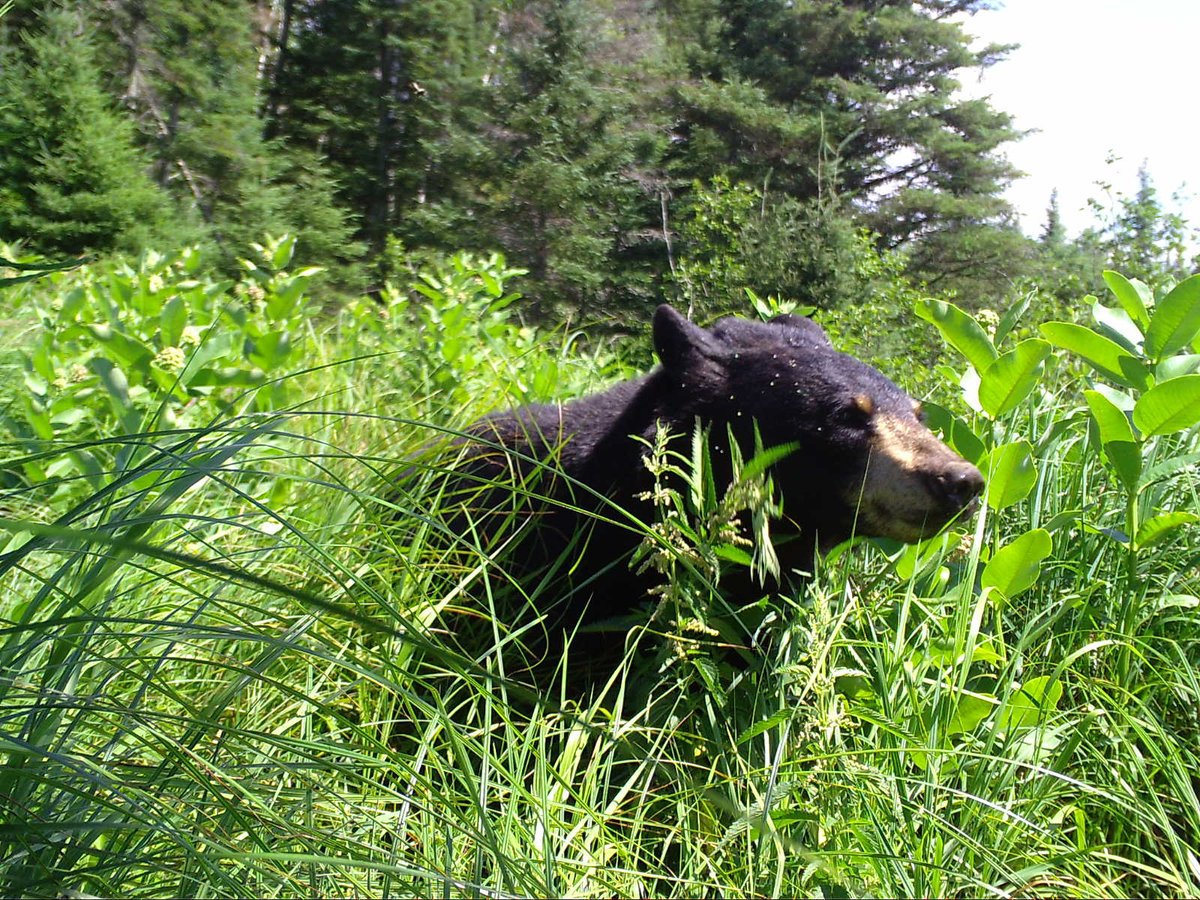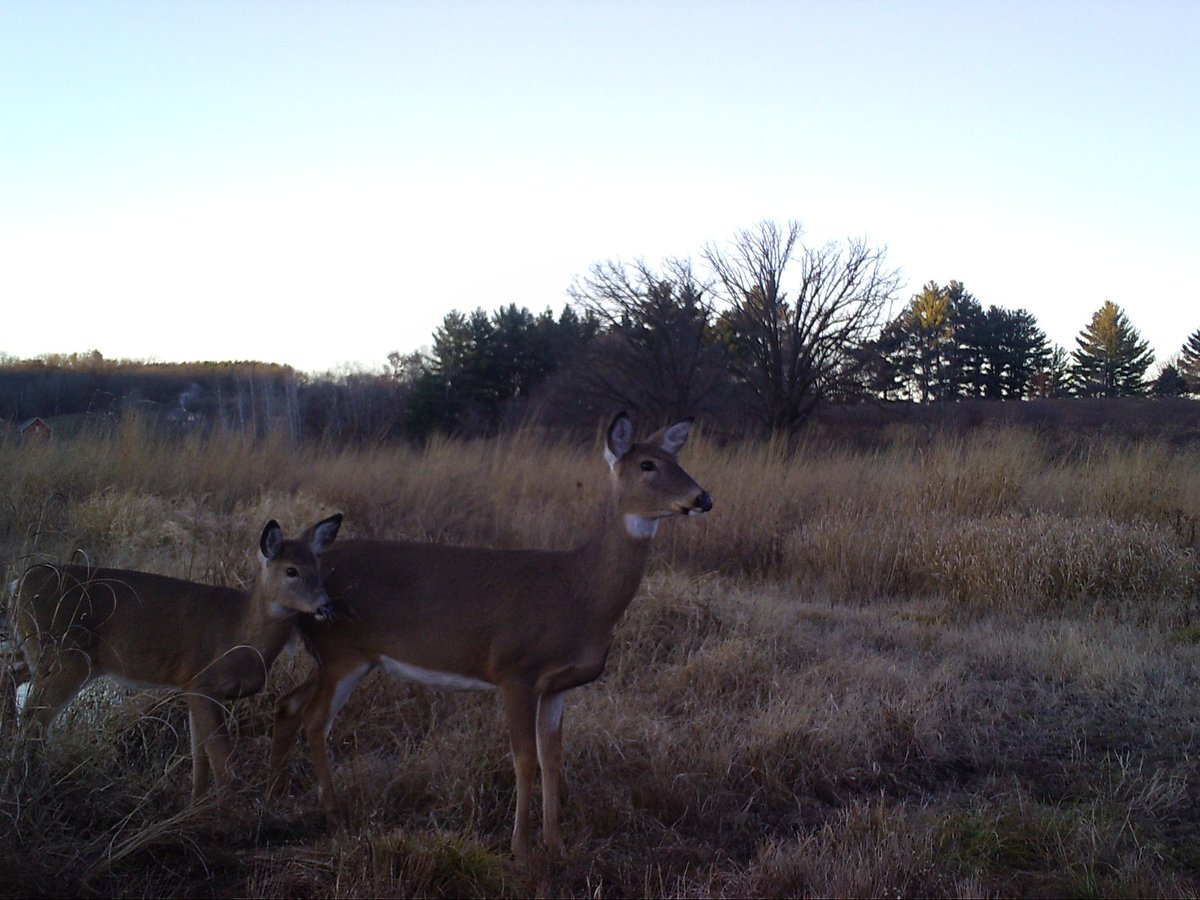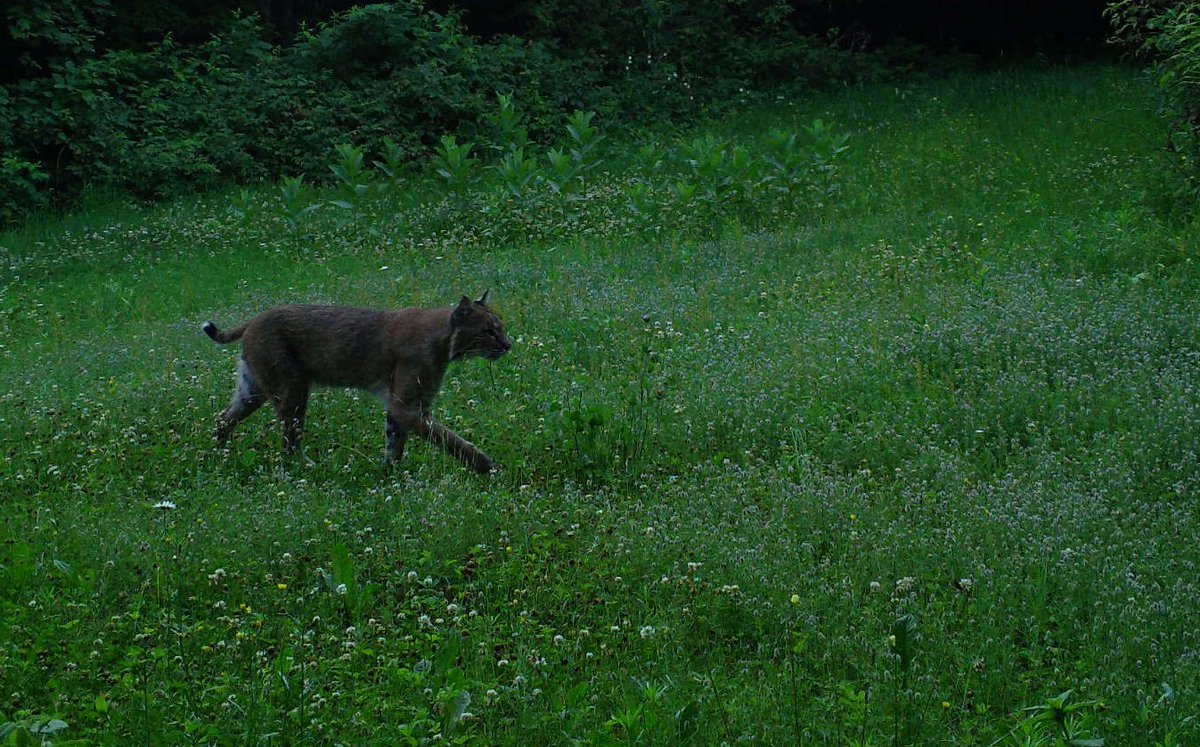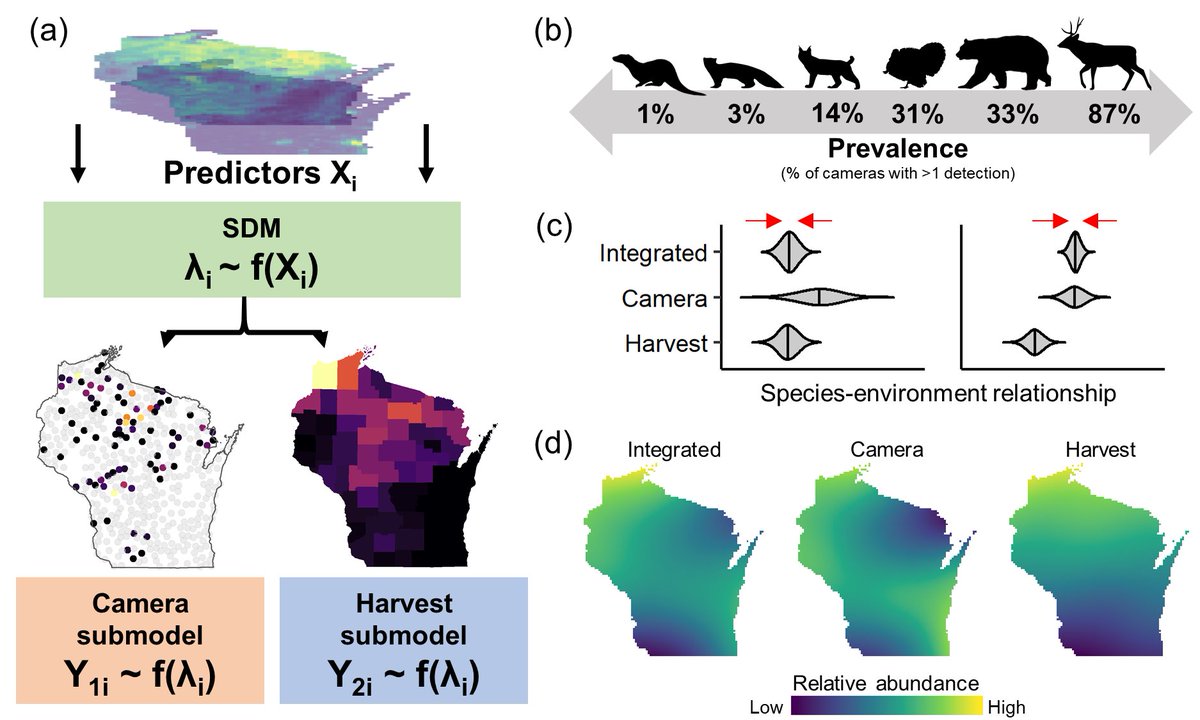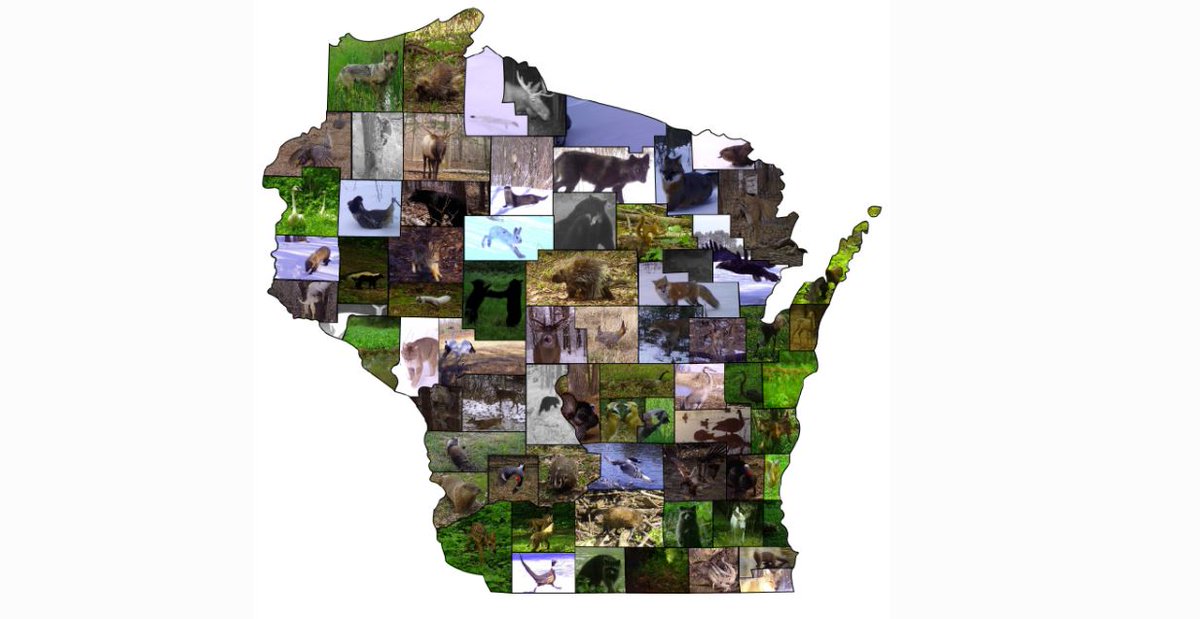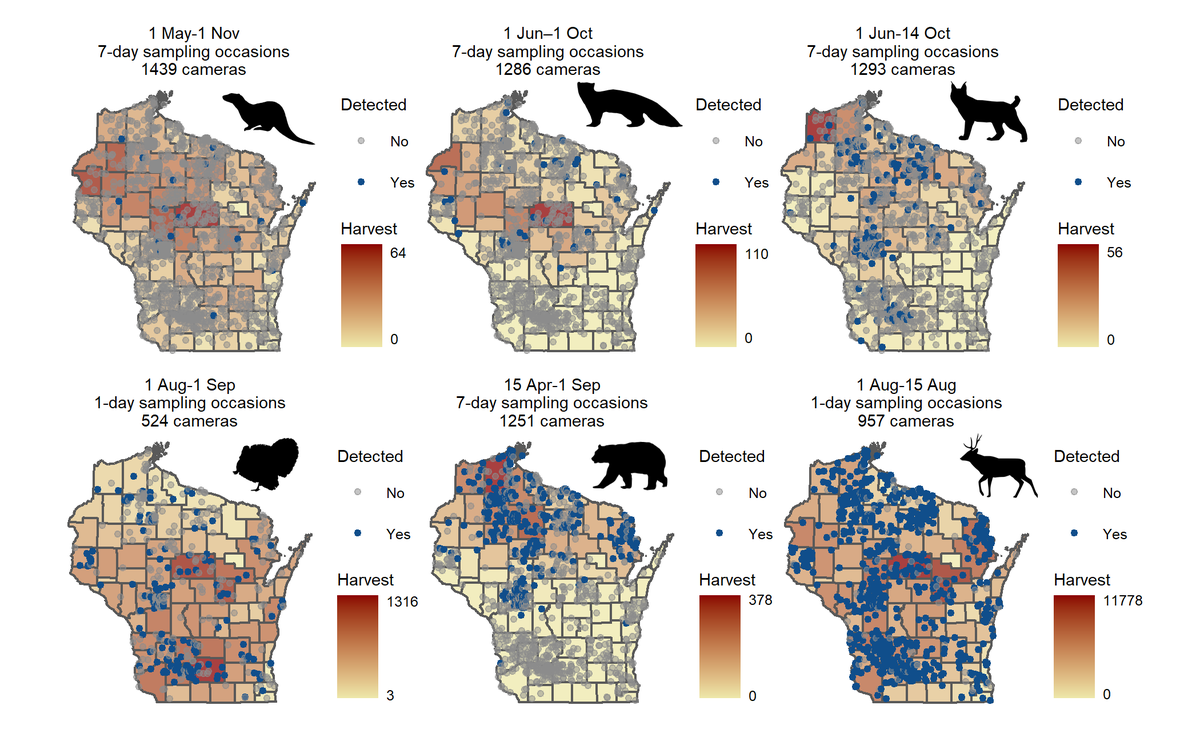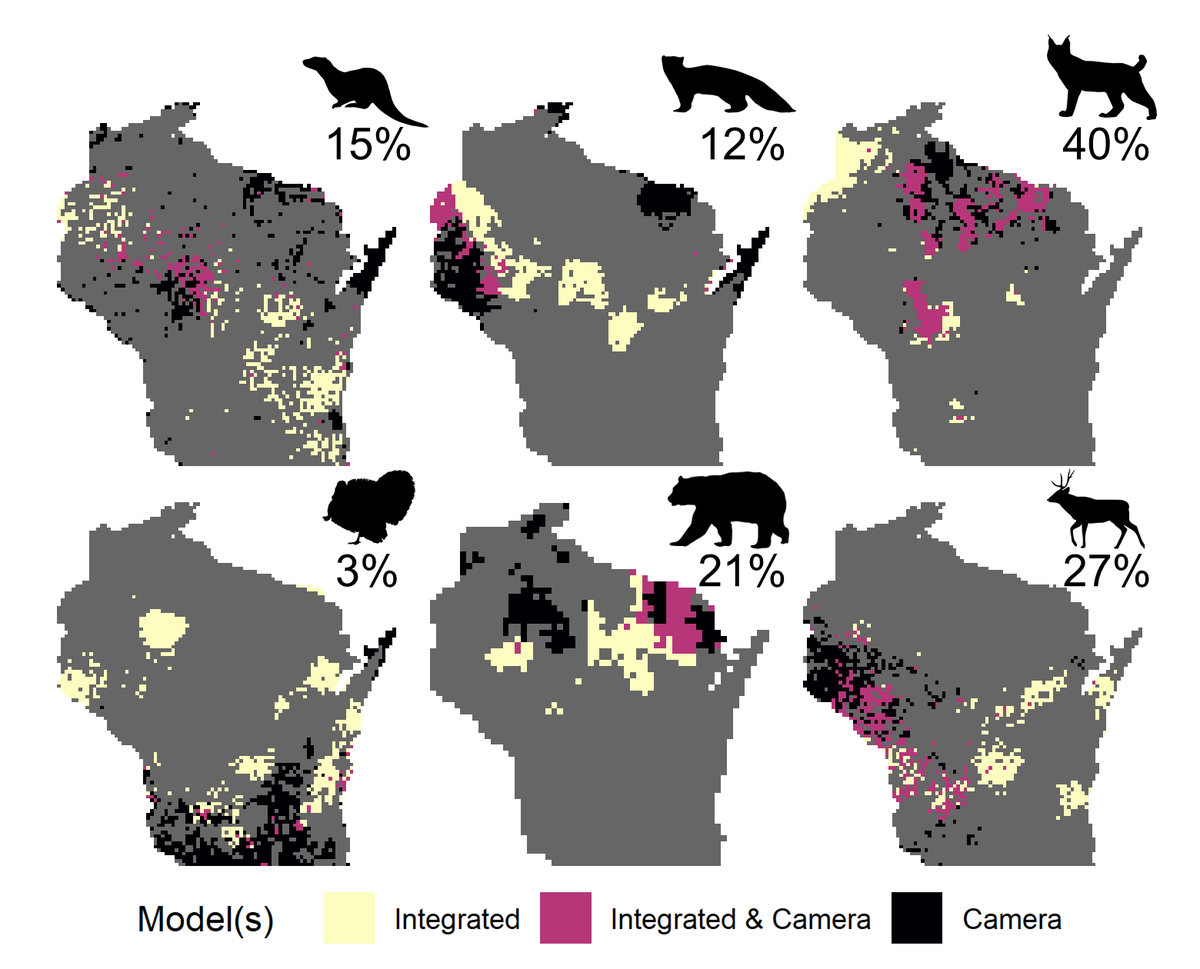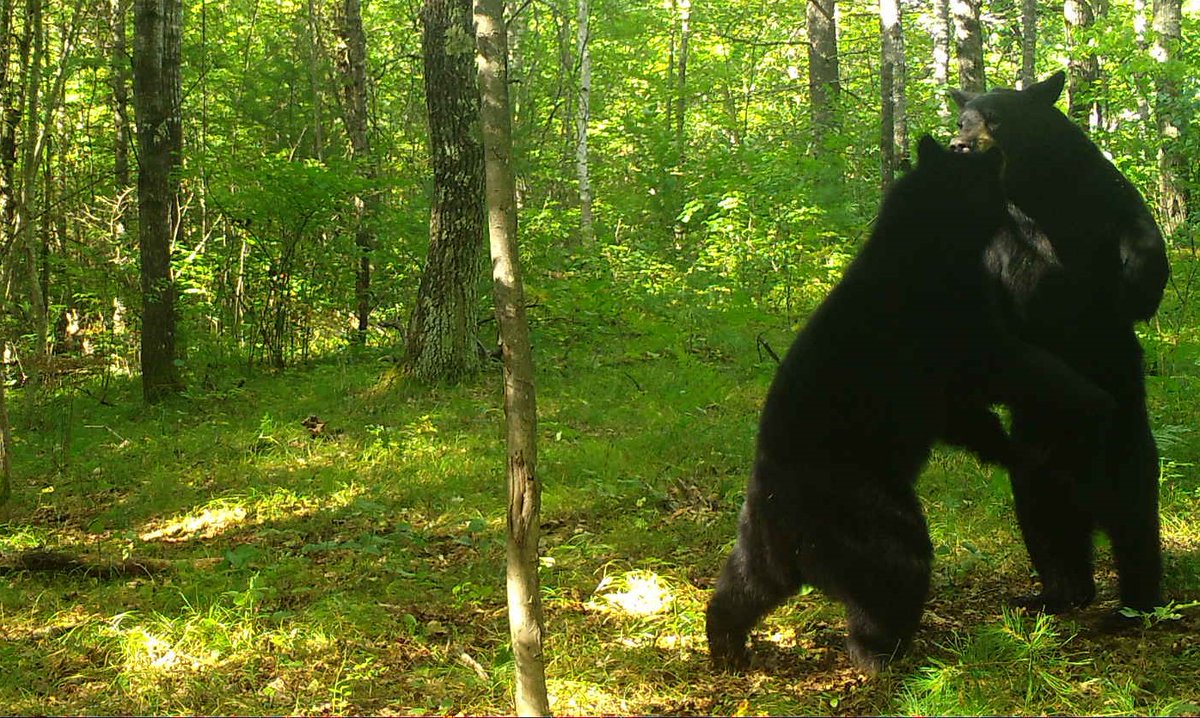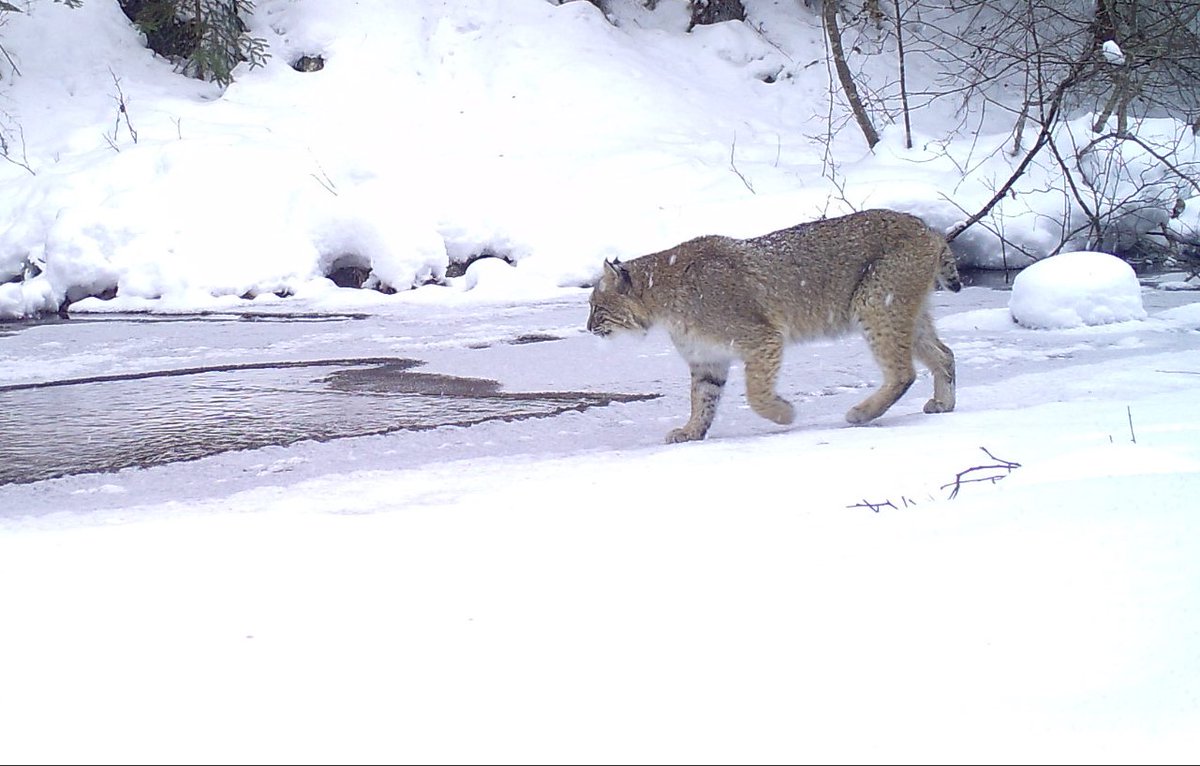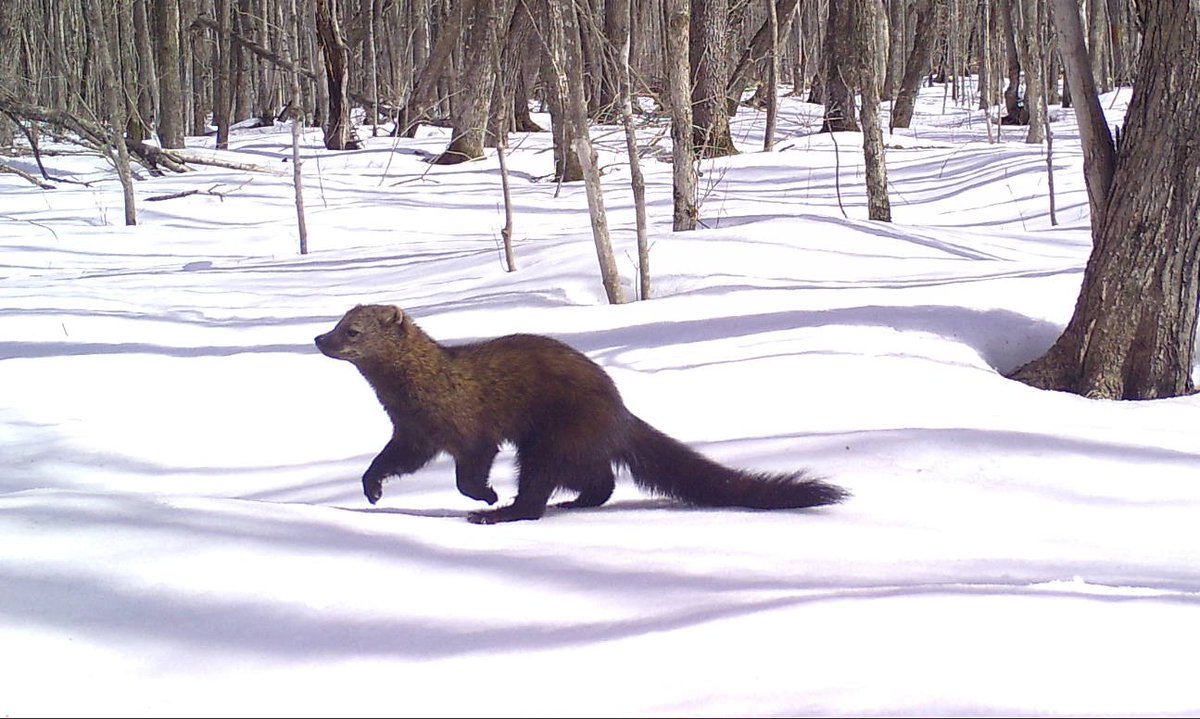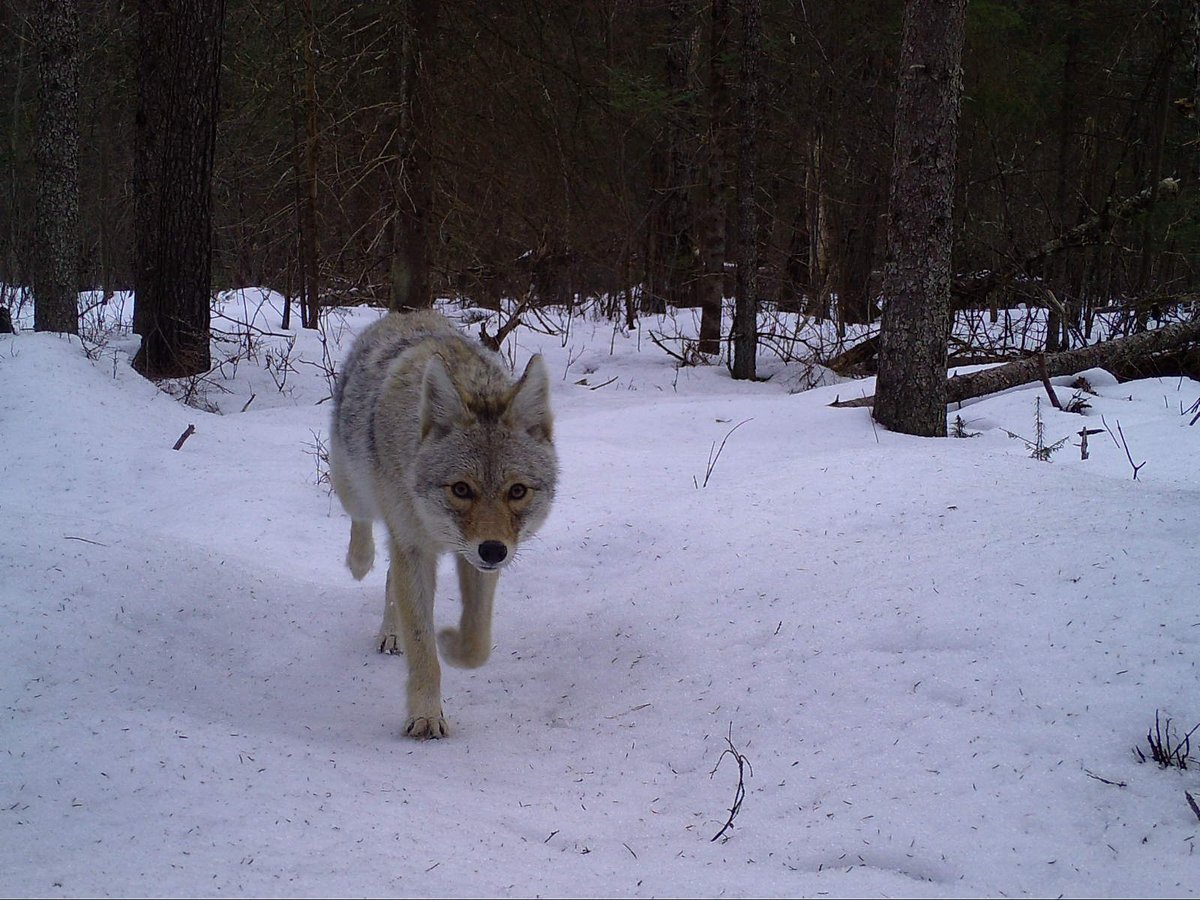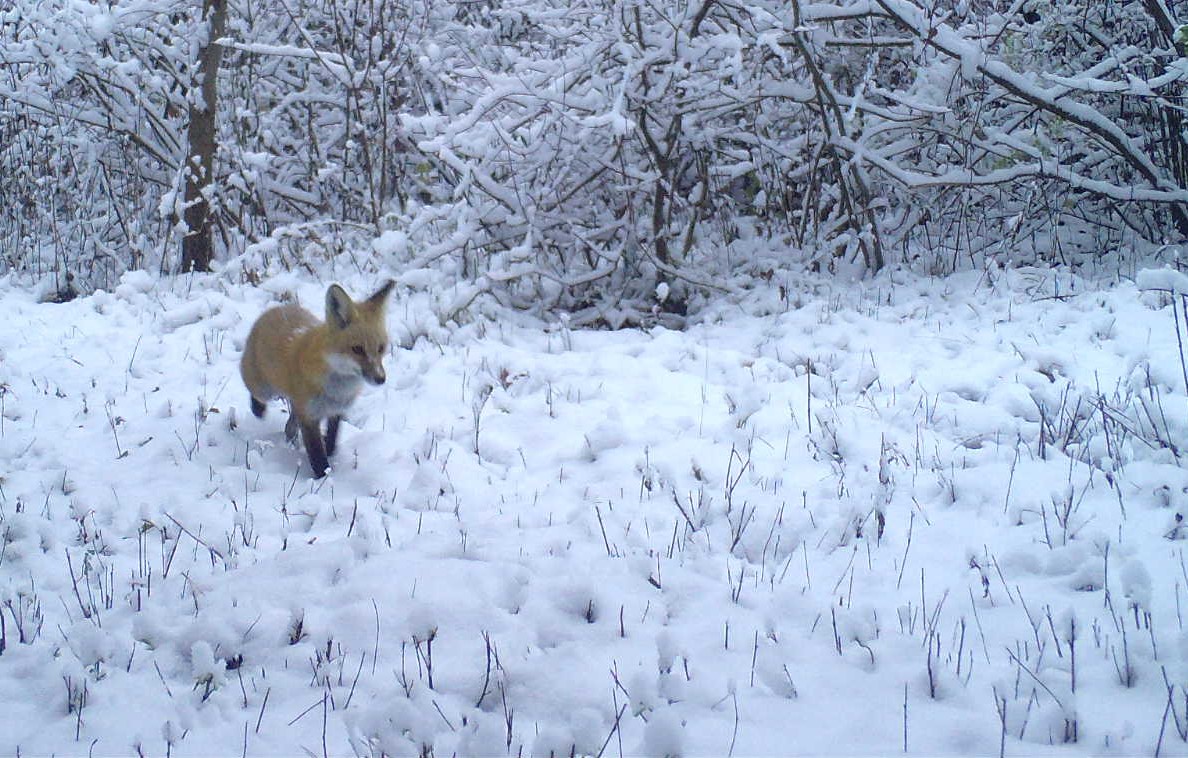* NEW PAPER *
Integrating harvest and camera trap data in species distribution models
Out now in Biological Conservation: https://bit.ly/3bfZNUM ">https://bit.ly/3bfZNUM&q... @ELSenviron
A giant https://abs.twimg.com/emoji/v2/... draggable="false" alt="🧵" title="Thread" aria-label="Emoji: Thread"> with info (and cool critter photos) 1/18
https://abs.twimg.com/emoji/v2/... draggable="false" alt="🧵" title="Thread" aria-label="Emoji: Thread"> with info (and cool critter photos) 1/18
Integrating harvest and camera trap data in species distribution models
Out now in Biological Conservation: https://bit.ly/3bfZNUM ">https://bit.ly/3bfZNUM&q... @ELSenviron
A giant
For management purposes, we need to know where species are/are not found. Which is difficult! Ideally, we want to use all the data we can get our hands on to inform our knowledge of where species occur. Integrated species distribution models are an emerging tool to do so. 2/18
We wanted to apply these new models to “team up” two types of data that are very common in wildlife monitoring: camera traps and harvest records. Cameras are great for species distribution modeling – you get species detections from a precise point in space 3/18
But why harvest? Well, a number of species are *legally* harvested, and harvest is used for managing populations but also as a way of monitoring them. E.g., in Wisconsin, state biologists use info from harvested animals to estimate population size for deer. 4/18
Harvest records have largely not been used for species distribution models, for good reason: they are often collated at coarse spatial resolution. By integrating harvest AND camera data in one model, we can “reclaim” harvest records to inform species distributions. 5/18
We used harvest records for 6 spp (bear, bobcat, fisher, otter, turkey, deer) in Wisconsin, along with camera trap data from Snapshot Wisconsin, a statewide monitoring network operated by @WDNR in collaboration with community (citizen) scientists. 6/18
Snapshot Wisconsin is a massive effort, with volunteers operating >2,000 cameras across the state. The project recently passed the 50 MILLION photo milestone. For more details, check out this paper (in press at EcoApps):
https://bit.ly/3o0wSJG
7/18">https://bit.ly/3o0wSJG&q...
https://bit.ly/3o0wSJG
7/18">https://bit.ly/3o0wSJG&q...
Briefly, integrated models operate by treating the two data sources as observations of the same underlying process (distribution of animals). For several of the species considered, camera detections and harvest numbers match up pretty well (if you squint) 8/18
I won’t go into details about the model here, but data and code are available in a public Github repo if you would like to learn more:
https://github.com/n-a-gilbert/isdm_examples
9/18">https://github.com/n-a-gilbe...
https://github.com/n-a-gilbert/isdm_examples
9/18">https://github.com/n-a-gilbe...
An oft-cited benefit of integrated modeling is that it provides more precise estimates of species-environment relationships. We compared integrated and camera-only models and found that the integrated model gave more precise results in a narrow majority of cases. 10/18
We compared agreement between integrated and camera-only models about high-abundance areas. Overall the two models had low agreement (highest was for bobcat – the %’s in the figure below are the percentage of cells that were ID’d as the highest abundance by both models) 11/18
What gives? One Achille’s heel of this approach is limited data on harvest effort. We had rudimentary effort metrics (e.g., # of tags sold) in most cases. Simulations showed that poorer measures of effort resulted in more bias. 12/18
Three take-home messages, relevant to folks involved in managing wildlife.
First, I think that more rigorous harvest effort reporting is necessary for this type of modeling to be legitimate. Would be difficult to implement, but would provide valuable information! 13/18
First, I think that more rigorous harvest effort reporting is necessary for this type of modeling to be legitimate. Would be difficult to implement, but would provide valuable information! 13/18
Second, tracking harvest at finer spatial resolution (we had county-level records) might be worthwhile. Other states (e.g., MN) track harvest within townships, and the less extreme resolution mismatch between harvest & camera data may make integration more tractable. 14/18
Third, expanding harvest records for other species is an opportunity to enhance monitoring. In Wisconsin, several species (e.g., coyotes, foxes, grouse) are harvested but records are not kept at a sub-state level. In contrast, cameras get pictures of everything! 15/18
To wrap up, shoutouts to my awesome coauthors: @BrentPease1, @anhalt_depies, @John_D_Clare, Twitterless Jennifer Stenglein, @PhilTownsnd, @TRVanDeelen, @ZuckerbergLab 16/18
Also, major thank you to @WDNR for the support, and big thank you to the many thousands of volunteers would help collect data! 17/18
Finally, all critter pictures in this thread are from Snapshot Wisconsin. We rely on crowd-sourcing to classify photos...if you want to volunteer to help classify photos, go to:
https://www.zooniverse.org/projects/zooniverse/snapshot-wisconsin/">https://www.zooniverse.org/projects/...
18/18
https://www.zooniverse.org/projects/zooniverse/snapshot-wisconsin/">https://www.zooniverse.org/projects/...
18/18

 Read on Twitter
Read on Twitter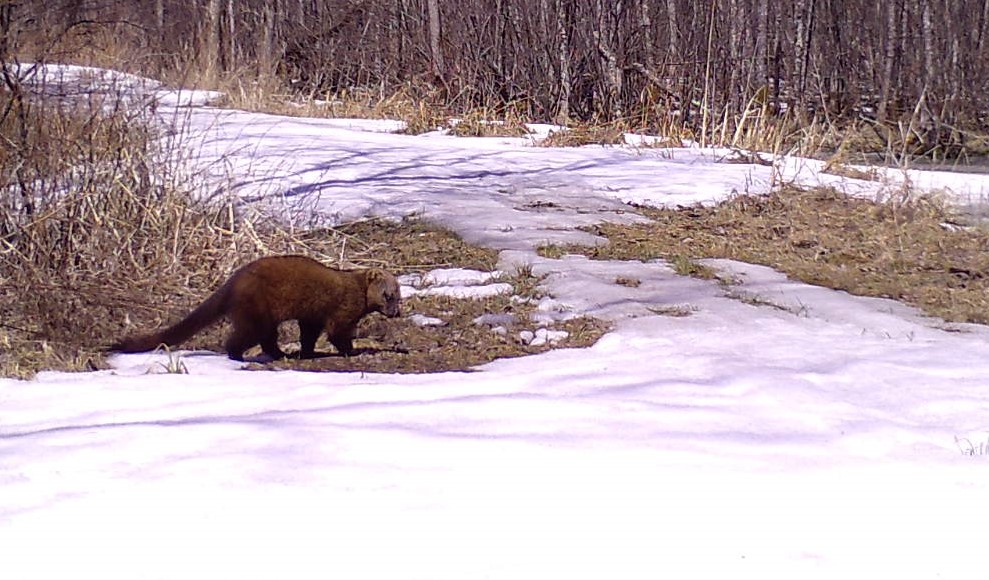 with info (and cool critter photos) 1/18" title="* NEW PAPER * Integrating harvest and camera trap data in species distribution modelsOut now in Biological Conservation: https://bit.ly/3bfZNUM&q... @ELSenvironA giant https://abs.twimg.com/emoji/v2/... draggable="false" alt="🧵" title="Thread" aria-label="Emoji: Thread"> with info (and cool critter photos) 1/18" class="img-responsive" style="max-width:100%;"/>
with info (and cool critter photos) 1/18" title="* NEW PAPER * Integrating harvest and camera trap data in species distribution modelsOut now in Biological Conservation: https://bit.ly/3bfZNUM&q... @ELSenvironA giant https://abs.twimg.com/emoji/v2/... draggable="false" alt="🧵" title="Thread" aria-label="Emoji: Thread"> with info (and cool critter photos) 1/18" class="img-responsive" style="max-width:100%;"/>
